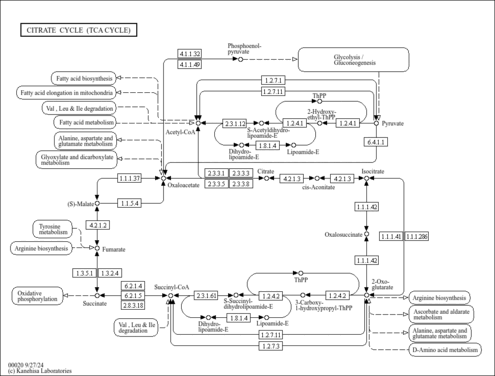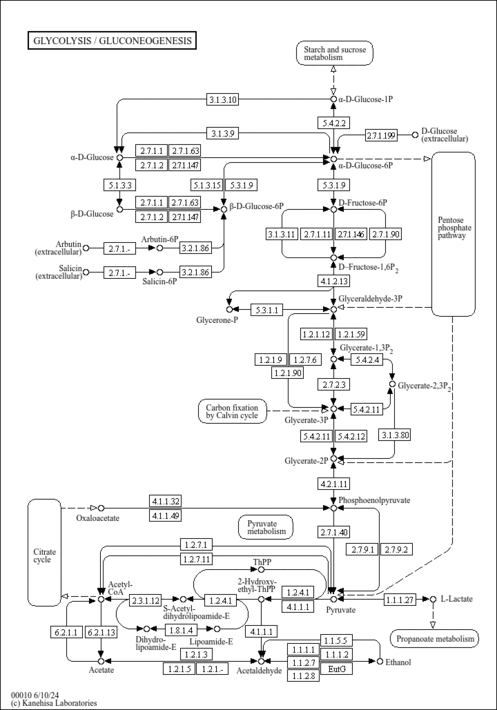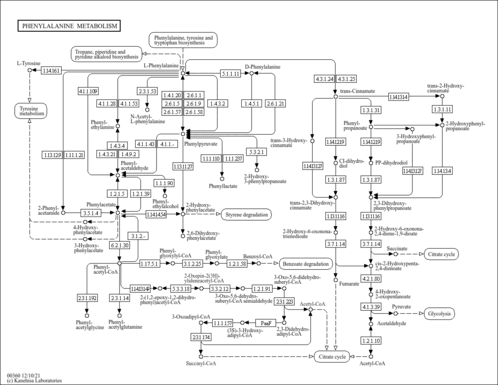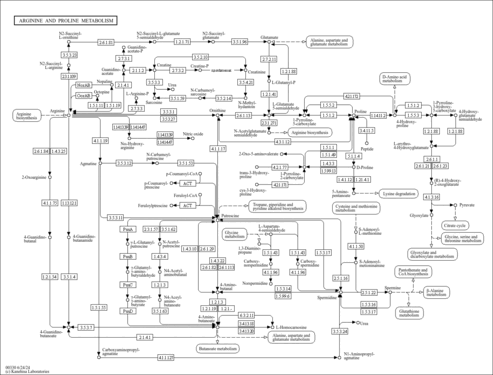| Record Information |
|---|
| Version | 5.0 |
|---|
| Status | Detected and Quantified |
|---|
| Creation Date | 2006-05-22 14:17:36 UTC |
|---|
| Update Date | 2023-02-21 17:16:10 UTC |
|---|
| HMDB ID | HMDB0002111 |
|---|
| Secondary Accession Numbers | |
|---|
| Metabolite Identification |
|---|
| Common Name | Water |
|---|
| Description | Water is a chemical substance that is essential to all known forms of life. It appears colorless to the naked eye in small quantities, though it is actually slightly blue in color. It covers 71% of Earth's surface. Current estimates suggest that there are 1.4 billion cubic kilometers (330 million m3) of it available on Earth, and it exists in many forms. It appears mostly in the oceans (saltwater) and polar ice caps, but it is also present as clouds, rain water, rivers, freshwater aquifers, lakes, and sea ice. Water in these bodies perpetually moves through a cycle of evaporation, precipitation, and runoff to the sea. Clean water is essential to human life. In many parts of the world, it is in short supply. From a biological standpoint, water has many distinct properties that are critical for the proliferation of life that set it apart from other substances. It carries out this role by allowing organic compounds to react in ways that ultimately allow replication. All known forms of life depend on water. Water is vital both as a solvent in which many of the body's solutes dissolve and as an essential part of many metabolic processes within the body. Metabolism is the sum total of anabolism and catabolism. In anabolism, water is removed from molecules (through energy requiring enzymatic chemical reactions) in order to grow larger molecules (e.g. starches, triglycerides and proteins for storage of fuels and information). In catabolism, water is used to break bonds in order to generate smaller molecules (e.g. glucose, fatty acids and amino acids to be used for fuels for energy use or other purposes). Water is thus essential and central to these metabolic processes. Water is also central to photosynthesis and respiration. Photosynthetic cells use the sun's energy to split off water's hydrogen from oxygen. Hydrogen is combined with CO2 (absorbed from air or water) to form glucose and release oxygen. All living cells use such fuels and oxidize the hydrogen and carbon to capture the sun's energy and reform water and CO2 in the process (cellular respiration). Water is also central to acid-base neutrality and enzyme function. An acid, a hydrogen ion (H+, that is, a proton) donor, can be neutralized by a base, a proton acceptor such as hydroxide ion (OH-) to form water. Water is considered to be neutral, with a pH (the negative log of the hydrogen ion concentration) of 7. Acids have pH values less than 7 while bases have values greater than 7. Stomach acid (HCl) is useful to digestion. However, its corrosive effect on the esophagus during reflux can temporarily be neutralized by ingestion of a base such as aluminum hydroxide to produce the neutral molecules water and the salt aluminum chloride. Human biochemistry that involves enzymes usually performs optimally around a biologically neutral pH of 7.4. (Wikipedia ). |
|---|
| Structure | |
|---|
| Synonyms | | Value | Source |
|---|
| [OH2] | ChEBI | | Acqua | ChEBI | | Agua | ChEBI | | Aqua | ChEBI | | BOUND water | ChEBI | | Dihydridooxygen | ChEBI | | Dihydrogen oxide | ChEBI | | eau | ChEBI | | H2O | ChEBI | | HOH | ChEBI | | Hydrogen hydroxide | ChEBI | | Wasser | ChEBI | | Purified water | Kegg | | Purified water in containers | Kegg | | Water, purified | Kegg | | Sterile purified water in containers | Kegg | | Water for injection | Kegg | | Water for injection in containers | Kegg | | Sterile water | Kegg | | Steam | HMDB | | Hydrogen oxide | HMDB |
|
|---|
| Chemical Formula | H2O |
|---|
| Average Molecular Weight | 18.0153 |
|---|
| Monoisotopic Molecular Weight | 18.010564686 |
|---|
| IUPAC Name | water |
|---|
| Traditional Name | water |
|---|
| CAS Registry Number | 7732-18-5 |
|---|
| SMILES | O |
|---|
| InChI Identifier | InChI=1S/H2O/h1H2 |
|---|
| InChI Key | XLYOFNOQVPJJNP-UHFFFAOYSA-N |
|---|
| Chemical Taxonomy |
|---|
| Description | Belongs to the class of inorganic compounds known as homogeneous other non-metal compounds. These are inorganic non-metallic compounds in which the largest atom belongs to the class of 'other non-metals'. |
|---|
| Kingdom | Inorganic compounds |
|---|
| Super Class | Homogeneous non-metal compounds |
|---|
| Class | Homogeneous other non-metal compounds |
|---|
| Sub Class | Not Available |
|---|
| Direct Parent | Homogeneous other non-metal compounds |
|---|
| Alternative Parents | Not Available |
|---|
| Substituents | - Homogeneous other non metal
|
|---|
| Molecular Framework | Not Available |
|---|
| External Descriptors | |
|---|
| Ontology |
|---|
| Not Available | Not Available |
|---|
| Physical Properties |
|---|
| State | Liquid |
|---|
| Experimental Molecular Properties | | Property | Value | Reference |
|---|
| Melting Point | 0 °C | Not Available | | Boiling Point | Not Available | Not Available | | Water Solubility | 55.5 mol/L | Not Available | | LogP | -1.38 | HANSCH,C ET AL. (1995) |
|
|---|
| Experimental Chromatographic Properties | Not Available |
|---|
| Predicted Molecular Properties | |
|---|
| Predicted Chromatographic Properties | Predicted Kovats Retention IndicesUnderivatized| Metabolite | SMILES | Kovats RI Value | Column Type | Reference |
|---|
| Water | O | 728.1 | Standard polar | 33892256 | | Water | O | 246.8 | Standard non polar | 33892256 | | Water | O | 71.4 | Semi standard non polar | 33892256 |
|
|---|
| Spectra |
|---|
| GC-MS Spectra| Spectrum Type | Description | Splash Key | Deposition Date | Source | View |
|---|
| Predicted GC-MS | Predicted GC-MS Spectrum - Water GC-MS (Non-derivatized) - 70eV, Positive | splash10-014i-9000000000-940497ad1005c84fc1f1 | 2016-09-22 | Wishart Lab | View Spectrum | | Predicted GC-MS | Predicted GC-MS Spectrum - Water GC-MS (Non-derivatized) - 70eV, Positive | Not Available | 2021-10-12 | Wishart Lab | View Spectrum | | MS | Mass Spectrum (Electron Ionization) | splash10-014i-9000000000-f7ee14225b4277f6218c | 2015-03-01 | Not Available | View Spectrum |
MS/MS Spectra| Spectrum Type | Description | Splash Key | Deposition Date | Source | View |
|---|
| Experimental LC-MS/MS | LC-MS/MS Spectrum - Water Linear Ion Trap , positive-QTOF | splash10-0006-0940000000-08a1813d85727d668cf4 | 2017-09-14 | HMDB team, MONA | View Spectrum | | Experimental LC-MS/MS | LC-MS/MS Spectrum - Water Linear Ion Trap , positive-QTOF | splash10-0a4l-0980000000-5b109ff45e0e5e5051ae | 2017-09-14 | HMDB team, MONA | View Spectrum | | Predicted LC-MS/MS | Predicted LC-MS/MS Spectrum - Water 10V, Positive-QTOF | splash10-014i-9000000000-1a741e1ffb75284635fc | 2015-05-27 | Wishart Lab | View Spectrum | | Predicted LC-MS/MS | Predicted LC-MS/MS Spectrum - Water 20V, Positive-QTOF | splash10-014i-9000000000-1a741e1ffb75284635fc | 2015-05-27 | Wishart Lab | View Spectrum | | Predicted LC-MS/MS | Predicted LC-MS/MS Spectrum - Water 40V, Positive-QTOF | splash10-014i-9000000000-1a741e1ffb75284635fc | 2015-05-27 | Wishart Lab | View Spectrum | | Predicted LC-MS/MS | Predicted LC-MS/MS Spectrum - Water 10V, Negative-QTOF | splash10-014i-9000000000-a2a06393708ba68baab0 | 2015-05-27 | Wishart Lab | View Spectrum | | Predicted LC-MS/MS | Predicted LC-MS/MS Spectrum - Water 20V, Negative-QTOF | splash10-014i-9000000000-a2a06393708ba68baab0 | 2015-05-27 | Wishart Lab | View Spectrum | | Predicted LC-MS/MS | Predicted LC-MS/MS Spectrum - Water 40V, Negative-QTOF | splash10-014i-9000000000-a2a06393708ba68baab0 | 2015-05-27 | Wishart Lab | View Spectrum | | Predicted LC-MS/MS | Predicted LC-MS/MS Spectrum - Water 10V, Negative-QTOF | splash10-014i-9000000000-f607d1cf161edb4c9053 | 2021-09-22 | Wishart Lab | View Spectrum | | Predicted LC-MS/MS | Predicted LC-MS/MS Spectrum - Water 20V, Negative-QTOF | splash10-014i-9000000000-f607d1cf161edb4c9053 | 2021-09-22 | Wishart Lab | View Spectrum | | Predicted LC-MS/MS | Predicted LC-MS/MS Spectrum - Water 40V, Negative-QTOF | splash10-014i-9000000000-f607d1cf161edb4c9053 | 2021-09-22 | Wishart Lab | View Spectrum | | Predicted LC-MS/MS | Predicted LC-MS/MS Spectrum - Water 10V, Positive-QTOF | splash10-014i-9000000000-3c10d712de0a101f8fef | 2021-09-22 | Wishart Lab | View Spectrum | | Predicted LC-MS/MS | Predicted LC-MS/MS Spectrum - Water 20V, Positive-QTOF | splash10-014i-9000000000-3c10d712de0a101f8fef | 2021-09-22 | Wishart Lab | View Spectrum | | Predicted LC-MS/MS | Predicted LC-MS/MS Spectrum - Water 40V, Positive-QTOF | splash10-014i-9000000000-3c10d712de0a101f8fef | 2021-09-22 | Wishart Lab | View Spectrum |
NMR Spectra| Spectrum Type | Description | Deposition Date | Source | View |
|---|
IR Spectra| Spectrum Type | Description | Deposition Date | Source | View |
|---|
| Predicted IR Spectrum | IR Ion Spectrum (Predicted IRIS Spectrum, Adduct: [M-H]-) | 2023-02-03 | FELIX lab | View Spectrum | | Predicted IR Spectrum | IR Ion Spectrum (Predicted IRIS Spectrum, Adduct: [M+H]+) | 2023-02-03 | FELIX lab | View Spectrum | | Predicted IR Spectrum | IR Ion Spectrum (Predicted IRIS Spectrum, Adduct: [M+Na]+) | 2023-02-03 | FELIX lab | View Spectrum |
|
|---|
| Biological Properties |
|---|
| Cellular Locations | - Cytoplasm
- Extracellular
- Mitochondria
- Nucleus
- Lysosome
- Endoplasmic reticulum
- Golgi apparatus
- Peroxisome
|
|---|
| Biospecimen Locations | - Amniotic Fluid
- Aqueous Humour
- Ascites Fluid
- Blood
- Breast Milk
- Cerebrospinal Fluid (CSF)
- Lymph
- Saliva
- Sweat
- Tears
|
|---|
| Tissue Locations | |
|---|
| Pathways | |
|---|
| Normal Concentrations |
|---|
| |
| Amniotic Fluid | Detected and Quantified | 55000000 uM | Adult (>18 years old) | Both | Normal | | details | | Aqueous Humour | Detected and Quantified | 55000000 uM | Adult (>18 years old) | Both | Normal | | details | | Ascites Fluid | Detected and Quantified | 55000000 uM | Adult (>18 years old) | Both | Normal | | details | | Blood | Detected and Quantified | 55000000 uM | Adult (>18 years old) | Both | Normal | | details | | Breast Milk | Detected and Quantified | 55000000 uM | Adult (>18 years old) | Both | Normal | | details | | Cerebrospinal Fluid (CSF) | Detected and Quantified | 55000000 uM | Adult (>18 years old) | Both | Normal | | details | | Lymph | Detected and Quantified | 55000000 uM | Adult (>18 years old) | Both | Normal | | details | | Saliva | Detected and Quantified | 55000000 uM | Adult (>18 years old) | Both | Normal | | details | | Sweat | Detected and Quantified | 55000000 uM | Adult (>18 years old) | Both | Normal | | details | | Tears | Detected and Quantified | 55000000 uM | Adult (>18 years old) | Both | Normal | | details |
|
|---|
| Abnormal Concentrations |
|---|
| Not Available |
|---|
| Associated Disorders and Diseases |
|---|
| Disease References | None |
|---|
| Associated OMIM IDs | None |
|---|
| External Links |
|---|
| DrugBank ID | DB09145 |
|---|
| Phenol Explorer Compound ID | Not Available |
|---|
| FooDB ID | FDB030900 |
|---|
| KNApSAcK ID | Not Available |
|---|
| Chemspider ID | 937 |
|---|
| KEGG Compound ID | C00001 |
|---|
| BioCyc ID | WATER |
|---|
| BiGG ID | 33474 |
|---|
| Wikipedia Link | Water |
|---|
| METLIN ID | 3194 |
|---|
| PubChem Compound | 962 |
|---|
| PDB ID | Not Available |
|---|
| ChEBI ID | 15377 |
|---|
| Food Biomarker Ontology | Not Available |
|---|
| VMH ID | H2O |
|---|
| MarkerDB ID | Not Available |
|---|
| Good Scents ID | Not Available |
|---|
| References |
|---|
| Synthesis Reference | Not Available |
|---|
| Material Safety Data Sheet (MSDS) | Download (PDF) |
|---|
| General References | Not Available |
|---|



